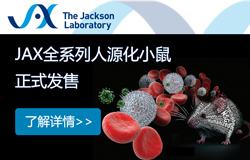表界面科學(xué)最新文獻(xiàn)QSense的解讀
百歐林簡(jiǎn)報(bào)-表界面科學(xué)最新文獻(xiàn)- QSense -2019年第16期
- Name:Layer by Layer Antimicrobial Coatings Based on Nafion, Lysozyme, and Chitosan
Journal:Nanomaterials
- 10.3390/nano9111563
- :The study focuses on the development of a new family of layer-by-layer coatings comprising Nafion, lysozyme and chitosan to address challenges related to microbial contamination. Circular dichroism was employed to gain insights on the interactions of the building blocks at the molecular level. Quartz crystal microbalance tests were used to monitor in real time the build-up of multilayer coatings, while atomic force microscopy, contact angle and surface zeta potential measurements were performed to assess the surface characteristics of the multilayer assemblies. Remarkably, the nanocoated surfaces show almost 100% reduction in the population of both Escherichia coli and Staphylococcus aureus. The study suggests that Nafion based synergistic platforms can offer an effective line of defence against bacteria, facilitating antimicrobial mechanisms that go beyond the concept of exclusion zone.
- Name:Clickable poly-l-lysine for the formation of biorecognition surfaces
Journal:RSC Advances
- 10.1039/c9ra08714a
- :Biomolecules are immobilized onto surfaces employing the fast and stable adsorption of poly-L-lysine (PLL) polymers and the versatile copper-free click chemistry reactions. This method provides the combined advantages of versatile surface adsorption with density control using polyelectrolytes and of the covalent and orthogonal immobilization of biomolecules with higher reaction rates and improved yields of click chemistry. Using DNA attachment as a proof of concept, control over the DNA probe density and applicability in electrochemical detection are presented.
- Name:An ultrafast quartz crystal microbalance based on a frequency comb approach delivers sub-millisecond time resolution
Journal:Review of Scientific Instruments
- 10.1063/1.5115979
- :Quartz crystal microbalance with dissipation monitoring (QCMD) is a simple and versatile sensing technique with applications in a wide variety of academic and industrial fields, most notably electrochemistry, biophysics, quality control, and environmental monitoring. QCMD is limited by a relatively poor time resolution, which is of the order of seconds with conventional instrument designs at the noise level usually required. In this work, we present a design of an ultrafast QCMD with submillisecond time resolution. It is based on a frequency comb approach applied to a high-fundamental-frequency (HFF) resonator through a multifrequency lock-in amplifier. The combination allows us to reach data acquisition rates >10 kHz. We illustrate the method using a toy model of a glass sphere dropped on the resonator surfaces, bare or coated with liposomes, in liquid. We discuss some interesting features of the results obtained with the dropped spheres, such as bending of the HFF resonators due to the impact, sphere bouncing (or the absence of it), and contact aging.
- Name:Unveiling the multi-step solubilization mechanism of sub-micron size vesicles by detergents
Journal:Scientific Reports
- 10.1038/s41598-019-49210-0
- :The solubilization of membranes by detergents is critical for many technological applications and has become widely used in biochemistry research to induce cell rupture, extract cell constituents, and to purify, reconstitute and crystallize membrane proteins. The thermodynamic details of solubilization have been extensively investigated, but the kinetic aspects remain poorly understood. Here we used a combination of single-vesicle Förster resonance energy transfer (svFRET), fluorescence correlation spectroscopy and quartz-crystal microbalance with dissipation monitoring to access the real-time kinetics and elementary solubilization steps of sub-micron sized vesicles, which are inaccessible by conventional diffraction-limited optical methods. Real-time injection of a non-ionic detergent, Triton X, induced biphasic solubilization kinetics of surface-immobilized vesicles labelled with the Dil/DiD FRET pair. The nanoscale sensitivity accessible by svFRET allowed us to unambiguously assign each kinetic step to distortions of the vesicle structure comprising an initial fast vesicle-swelling event followed by slow lipid loss and micellization. We expect the svFRET platform to be applicable beyond the sub-micron sizes studied here and become a unique tool to unravel the complex kinetics of detergent-lipid interactions.
- Name:A fundamental study of adsorption kinetics of surfactants onto metal oxides using quartz crystal microbalance with dissipation (QCM-D)
Journal:Colloids and Surfaces A: Physicochemical and Engineering Aspects
- 10.1016/j.colsurfa.2019.124237
- :Membrane fouling challenges the viability of oil-field produced water (PW) treatment with ceramic membranes. Surfactants play an important role in irreversible fouling through adsorption phenomena. However, previous studies have shown contradictory results. Hence, a fundamental understanding of surfactants-metal oxides interactions is necessary.
- Name:Understanding the cation dependent surfactant adsorption on clay minerals in oil recovery
Journal:Energy & Fuels
- 10.1021/acs.energyfuels.9b03109
- :Surfactants have the ability to mobilize residual oil trapped in pore spaces of matrix rocks by lowering the oil-water interfacial tension, resulting in a higher oil recovery. However, the loss of surfactant by adsorption onto the rock surface has become a major concern that reduces the efficiency of the surfactant flooding process. In this study, the adsorption behavior of an anionic surfactant to a clay mineral surface was investigated by Quartz Crystal Microbalance with Dissipation monitoring (QCM-D) upon variation with different cation conditions. Through recording the change of frequency and dissipation of clay modified sensors, it allows us for a real-time quantitative analysis of the surfactant adsorption with nanogram sensitivity. The results revealed that the surfactant adsorption increased in a Ca2+ containing solution with increasing pH from 6 to 11, while from a Na+ containing solution more adsorption occurred at acidic conditions. The adsorbed amount went through a maximum (~200 mM) as a function of the Ca2+ concentration and the Voigt model suggested that multilayer adsorption of surfactants could be as many as 4-6 monolayers. Using mixed cation (Ca2+ and Na+) solutions, the amount of adsorbed surfactant decreased linearly with decreasing fraction of CaCl2, but Na+ competed for about ~30% adsorption sites. The importance of the presence of CaCl2 for the surfactant adsorption was stressed in high salinity and low salinity solutions in the presence and absence of Ca2+. Furthermore, increasing the temperature from 23 to 65 °C shows first a small increase of surfactant adsorption followed by a reduction about 20%. The obtained results contribute to a better understanding of surfactant adsorption on clay surfaces and guide to optimal flooding conditions with a reduced surfactant loss.
- 小型噴霧干燥機(jī)的技術(shù)探索:高效能轉(zhuǎn)換
- 從實(shí)驗(yàn)室到生產(chǎn)線:固態(tài)光源技術(shù)在生物成像與工業(yè)檢測(cè)中的性能提升
- 錐透鏡和它產(chǎn)生的各種環(huán)形光束應(yīng)用
- PI3KCIIα自噬防小鼠低剪切應(yīng)力引起的內(nèi)皮功能障礙與動(dòng)脈粥樣硬化
- 抑制膜修復(fù)蛋白膜聯(lián)蛋白-A2可防止腫瘤侵襲和轉(zhuǎn)移
- 醫(yī)療AR眼鏡在遠(yuǎn)程會(huì)診等醫(yī)療領(lǐng)域的應(yīng)用優(yōu)勢(shì)
- 3D打印陶瓷技術(shù)介紹
- 光刻技術(shù)中的聚焦控制
- 熱烈慶祝無錫耐思筆式注射器首次出口美國(guó)
- 昊量時(shí)間相關(guān)單光子計(jì)數(shù)器Time Tagger v2.17發(fā)布
- 上海新諾儀器助力協(xié)辦第十一屆上海市新材料創(chuàng)新大賽
- 譜鐳光電推出結(jié)構(gòu)緊湊型飛秒脈沖測(cè)量?jī)xFROG
- 昊量光電代理商—法國(guó)ALPAO新品變形鏡DM57-15上線
- 羅輯邀您參加中國(guó)神經(jīng)科學(xué)學(xué)會(huì)第十七屆全國(guó)學(xué)術(shù)會(huì)議
- 濱松邀您參展2024年深圳第25屆中國(guó)國(guó)際光博會(huì)
- 昊量光電邀您共聚第25屆中國(guó)國(guó)際光電博覽會(huì)
Copyright(C) 1998-2024 生物器材網(wǎng) 電話:021-64166852;13621656896 E-mail:info@bio-equip.com






